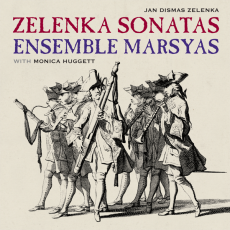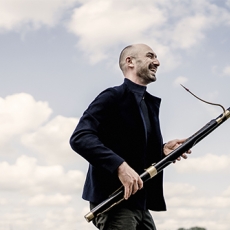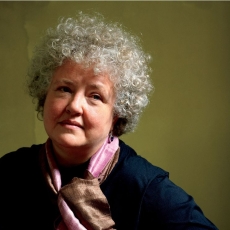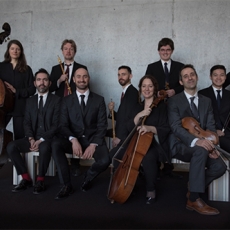Ensemble Marsyas - Zelenka Sonatas - PSTracks
Actually, I think any open-minded listener would respond to a wonderful set of Ensemble Sonatas by Jan Dismas Zelenka (1679-1745). This comes to us courtesy of Linn (CKD 415) and an all-star band that calls itself Ensemble Marsyas. Not that it matters, but Marsyas was the satyr in Greek mythology who so excelled at playing reeds (the aulos, I presume) that he challenged Apollo to a cutting contest. Linn's Ensemble Marsyas formed itself in Edinburgh in 2011 and it consists of three young first-chair double-reed players and a phenomenal 'rhythm section' of theorbo, keyboards, and bass violone. For this album they are joined by celebrated early-music violinist Monica Huggett, which is a bit like having Eric Clapton agree to sit in at your guitar class's spring recital. Except that everyone in this group is a player. And have they found some excellent music for us. (Recorded in Linn's cutting-edge-excellent sound, of course!)
Zelenka was a Bohemian, from Lounovice. I am sure you'd like to know a little bit more about him, and so would I, frankly. I know there's been an explosion of interest in his church music - I get review copies of his late Masses on a regular basis - and apparently the same sort of fevered interest in him occurred among wind players when scholarly editions of the six sonatas for two oboes and bassoon were published during 1955-65. These are trio sonatas, which means they can and should be played by at least four players and possibly more. One of them is scored for violin, oboe and bassoon, hence Huggett's involvement. On this album we get three complete Sonatas and the Andante from a Simphonie à 8 Concertanti.
If you think you know Baroque music, you're in for a series of pleasant shocks. Zelenka's compositional voice is unique. He favors unusual thematic lines, odd little contrapuntal detours, and plenty of terror-inducing technical challenges for the players. It's music that both welcomes you in and gently surprises, delights, and moves you.
The musicologist in me wants to show you how these are related to the sonata da camera (dance movements) and the sonata da chiesa (adagios and fugues, suitable for church). But the human in me just wants to tell you what great Driving-Around Music this makes. Know what I mean? It's got nice dynamic contrasts, but nothing so extreme that you find yourself fiddling with the volume knob while you're trying to change lanes. It chugs along pleasantly, but offers details that keep you awake while you're waiting for your exit ramp to appear. I love this music. It's the recording I have played and replayed the most this month. It's the one I won't bother to put away for quite a while.



